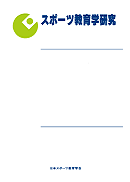39 巻, 1 号
選択された号の論文の8件中1~8を表示しています
- |<
- <
- 1
- >
- >|
原著論文
-
原稿種別: 原著論文
2019 年 39 巻 1 号 p. 1-18
発行日: 2019/05/31
公開日: 2019/09/02
PDF形式でダウンロード (1255K) -
原稿種別: 原著論文
2019 年 39 巻 1 号 p. 19-31
発行日: 2019/05/31
公開日: 2019/09/02
PDF形式でダウンロード (568K) -
原稿種別: 原著論文
2019 年 39 巻 1 号 p. 33-50
発行日: 2019/05/31
公開日: 2019/09/02
PDF形式でダウンロード (1422K)
実践報告
-
原稿種別: 実践報告
2019 年 39 巻 1 号 p. 51-59
発行日: 2019/05/31
公開日: 2019/09/02
PDF形式でダウンロード (316K) -
原稿種別: 実践報告
2019 年 39 巻 1 号 p. 61-78
発行日: 2019/05/31
公開日: 2019/09/02
PDF形式でダウンロード (2749K)
シンポジウム報告
-
原稿種別: シンポジウム報告
2019 年 39 巻 1 号 p. 79-82
発行日: 2019/05/31
公開日: 2019/09/02
PDF形式でダウンロード (279K) -
原稿種別: シンポジウム報告
2019 年 39 巻 1 号 p. 83-86
発行日: 2019/05/31
公開日: 2019/09/02
PDF形式でダウンロード (482K) -
原稿種別: シンポジウム報告
2019 年 39 巻 1 号 p. 87-89
発行日: 2019/05/31
公開日: 2019/09/02
PDF形式でダウンロード (1030K)
- |<
- <
- 1
- >
- >|
